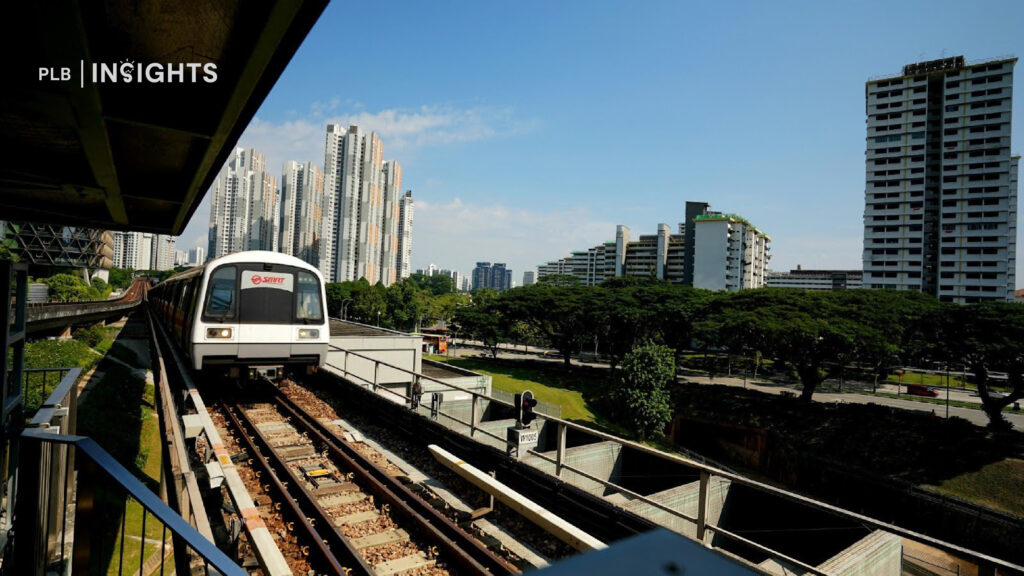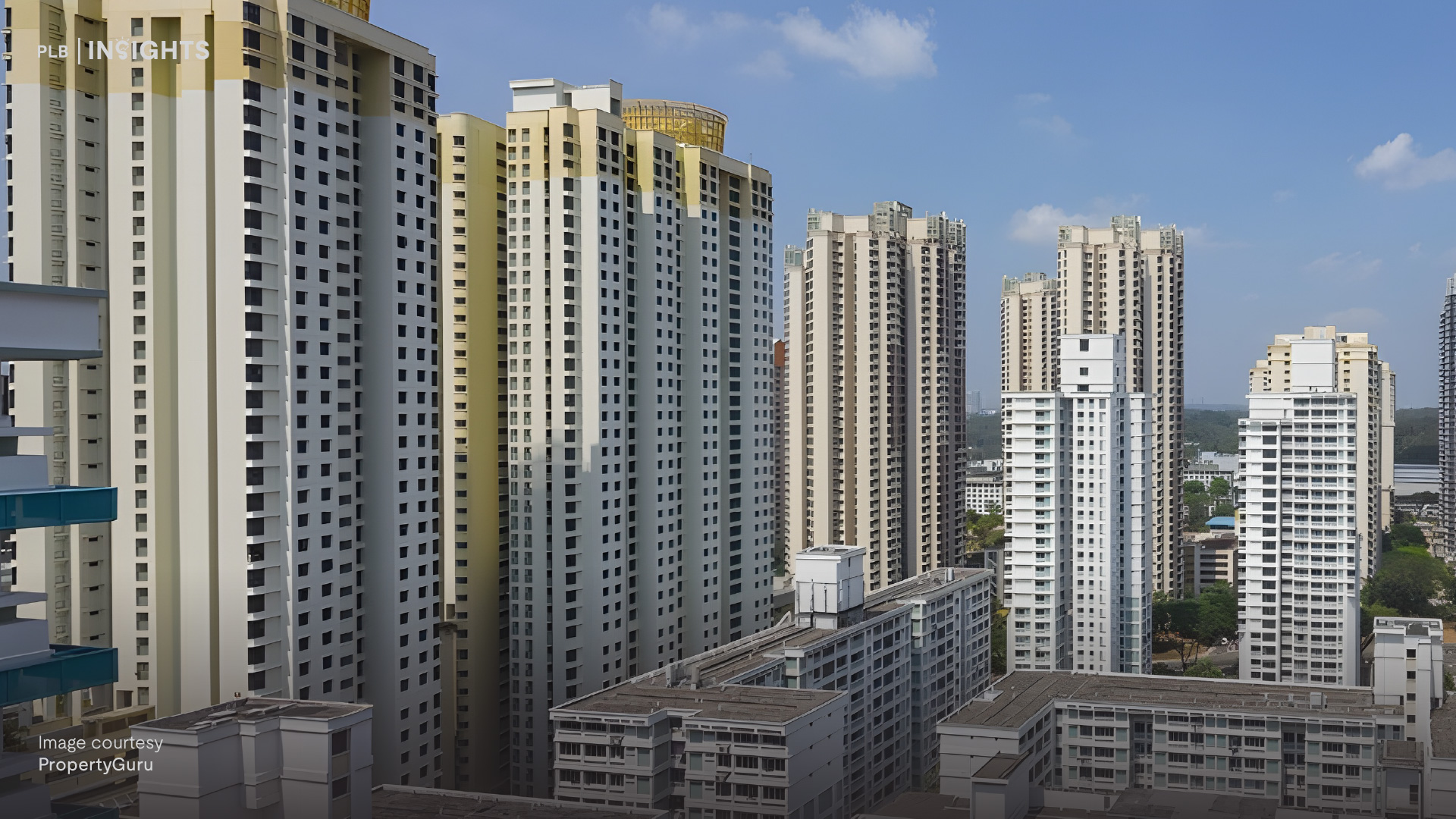
In Singapore, where efficiency is key to navigating a fast-paced lifestyle, proximity to an MRT station is more than just a convenience—it’s a defining factor in property desirability. Living near transportation hubs significantly reduces commuting times, freeing up valuable hours for residents to focus on the things that matter most, be it family, personal development, or leisure. This phenomenon, which we term the MRT Effect in our proprietary MOAT Analysis, highlights the tangible value that connectivity brings to residential properties.
The Thomson-East Coast Line (TEL) exemplifies the MRT Effect in action. Since its initial operations began in 2020, the TEL has steadily reshaped the East Coast’s real estate landscape. Earlier in 2024, the opening of Stage 4 introduced seven new stations—Tanjong Rhu, Katong Park, Tanjong Katong, Marine Parade, Marine Terrace, Siglap, and Bayshore—bringing unprecedented accessibility to the area. Approximately 235,000 households are now within a 10-minute walk of an MRT station, and commuting times between key locations, such as Marine Parade and Shenton Way, have been halved from 40 to 20 minutes.
This enhanced connectivity has driven noticeable changes in property values and rents along the TEL, further cementing the MRT Effect as a critical driver in Singapore’s property market. In this case study, we explore how the TEL expansion has influenced property prices and rental demand in the East Coast, offering insights into the transformative power of connectivity on real estate.
Immediate Market Impact

The TEL expansion has had a transformative impact on property activity along its route, particularly near the seven new stations launched in Stage 4. PropertyGuru’s data from Q3 2024 highlights a remarkable surge in non-landed private residential listings within a 0.8 km radius of these stations. Listings rose to 2,619, compared to the 2023 quarterly average of just 410, a staggering 4.8x increase year-on-year (y-o-y).
This surge in listings reflects property owners’ growing recognition of the TEL’s value in boosting property appeal. Many appear eager to capitalise on rising property prices spurred by improved connectivity. Beyond listings, views of these properties nearly doubled in Q3 2024, illustrating a sharp uptick in buyer interest directly linked to the TEL’s expansion.
The rental market has mirrored this enthusiasm. For example, near Tanjong Katong station, rental listings climbed dramatically to 1,844 in Q3 2024, compared to just 301 a year earlier. Similarly, rental listing views rose by close to 90%, showcasing heightened demand among renters drawn to the convenience of the new MRT line.
This surge in activity underscores the MRT Effect in action. Enhanced connectivity brought by the TEL’s latest stage has not only driven increased interest in buying and renting but also shifted market dynamics, making properties along the route more attractive and competitive. These trends suggest that the introduction of Stage 4 has amplified the desirability of the East Coast, turning it into a hotspot for both investors and residents seeking prime connectivity.
Such dramatic changes highlight the undeniable influence of transport infrastructure on Singapore’s real estate landscape, with the TEL serving as a prime case study of how enhanced accessibility directly translates to increased market activity.
Price Movements Along TEL
Living near an MRT station has long commanded a price premium, and the TEL expansion is a prime example of this phenomenon. For condominiums located within a 0.8km radius of the new TEL stations, the median asking price per square foot (PSF) climbed to $2,068 in Q3 2024, up from $1,978 in Q1. This marks a 6.8% y-o-y increase, underscoring how enhanced connectivity drives property values upward. In contrast, landed homes in the same vicinity saw a modest 1.6% rise in PSF prices, reflecting differing market dynamics and buyer priorities.
This surge in property values highlights the advantage of early investment in areas anticipating MRT connectivity. Properties near TEL stations saw asking prices rise steadily from the start of 2024, even as early buyers navigated challenges like construction-related noise and traffic congestion. For those willing to endure these short-term inconveniences, the long-term appreciation potential often outweighs the initial drawbacks.
Beyond the immediate benefits of reduced travel times, the TEL stations offer significant future upside. Proximity to upcoming developments such as Changi Airport’s Terminal 5 and the Greater Southern Waterfront positions properties near the TEL as strategic investments. These large-scale projects are expected to boost regional economic activity and enhance livability, further solidifying the appeal of homes in these areas.
While higher asking prices reflect the immediate convenience of MRT access, they also signal broader strategic value. MRT infrastructure acts as a long-term catalyst for urban development, making the TEL not just a transport line but a driver of sustained property appreciation. For buyers entering the market today, the balance between short-term premiums and long-term gains underscores the transformative power of enhanced connectivity on Singapore’s real estate landscape.
Broader Impact on the Property Market

The TEL expansion has brought about a significant reshaping of property dynamics, particularly in areas near both new and existing MRT stations. While the new TEL stations have boosted property values and rental demand in their immediate vicinities, the impact on properties near established MRT stations has been mixed, driven by the interplay of substitution effects and network effects.
Properties closer to new TEL stations such as Marine Parade and Tanjong Katong have gained a competitive edge, attracting buyers and tenants drawn to the enhanced connectivity and convenience these locations now offer. Conversely, properties near older MRT stations, such as Paya Lebar, are facing increased competition. Sellers and landlords in these areas must contend with shifting demand, as some residents and renters gravitate toward the newly accessible TEL locales.
Despite this, the network effect of the expanded TEL line cannot be overlooked. Residents near established stations benefit from the broader MRT network, which now provides more transit options and alternative routes, enhancing overall accessibility and reducing dependence on specific lines. This makes properties near existing MRT stations retain their functional value even as competition rises.
In the rental market, however, the substitution effect is more pronounced. Nationally, median asking rents near MRT stations dropped 15.7% y-o-y in 2024, reflecting broader market trends such as increased housing supply and cooling measures. Yet, properties near TEL stations have displayed resilience. For instance, in Tanjong Katong, condo rents declined by less than 1% y-o-y in Q3 2024, significantly outperforming the market. By comparison, rents near Paya Lebar saw a sharper drop of 4.6% over the same period.
This resilience is further supported by increased interest in TEL station vicinities, as reflected in property listing views. Tanjong Katong saw a 2x increase in views y-o-y, while Paya Lebar recorded a 1.8x increase, though this didn’t translate into higher asking prices, highlighting the substitution effect.
The TEL’s impact reveals a redistribution of demand across Singapore’s MRT network. While new stations enjoy a first-mover advantage, older stations remain relevant due to their integration within the expanded network. For property investors and landlords, these trends emphasise the importance of evaluating both connectivity advantages and market dynamics to make informed decisions in a rapidly evolving real estate landscape.
Future Property Dynamics

The opening of Stage 4 of the TEL has not only enhanced commuting convenience but also reshaped East Coast’s property market in profound ways. Properties near the new stations have experienced notable price appreciation and rental demand surges, reaffirming the enduring value of MRT connectivity as a cornerstone of Singapore’s real estate market. Early investors in these areas have particularly benefited from significant capital gains, though they had to endure construction-related inconveniences in the interim.
This case study of the TEL highlights the MRT Effect—a measurable increase in property value driven by proximity to MRT stations. However, this impact is not static and may evolve as Singapore’s transport network continues to expand. The upcoming Cross Island Line (CRL) and other future MRT projects could redistribute demand, reducing the exclusivity and price premium currently associated with TEL-proximate properties.
Moreover, broader societal shifts, such as the rise of remote work and decentralisation of the Central Business District (CBD), may also influence how properties are valued in the future. As accessibility to workplaces becomes less critical for certain demographics, other factors—such as lifestyle amenities, quality of living spaces, and long-term growth potential—may take precedence over MRT connectivity.
That said, MRT access remains a key factor among many that drive property values and demand. Buyers and investors must adopt a holistic approach, taking into account their unique needs, investment timelines, and market conditions. This includes evaluating potential hidden costs, such as higher property taxes, maintenance fees, or opportunity costs, to ensure sound decision-making.
As Singapore’s urban landscape continues to evolve, the TEL serves as a powerful example of how infrastructure can shape property markets, offering both opportunities and challenges for homeowners and investors alike. By understanding these dynamics and keeping an eye on future developments, buyers can make informed decisions that align with their goals, whether for long-term residence or strategic investment.
Let’s get in touch
If you’re in the midst of hunting for a dream home or investment property, or are looking to sell and transit to your next abode, let us guide you through the process! Our team offers tailored advice backed by deep market insights and proprietary tools like the MOAT Analysis, helping you make data-driven decisions for your real estate journey.
Contact us here today to explore opportunities in Singapore’s dynamic property market and see how enhanced connectivity can work to your advantage.








